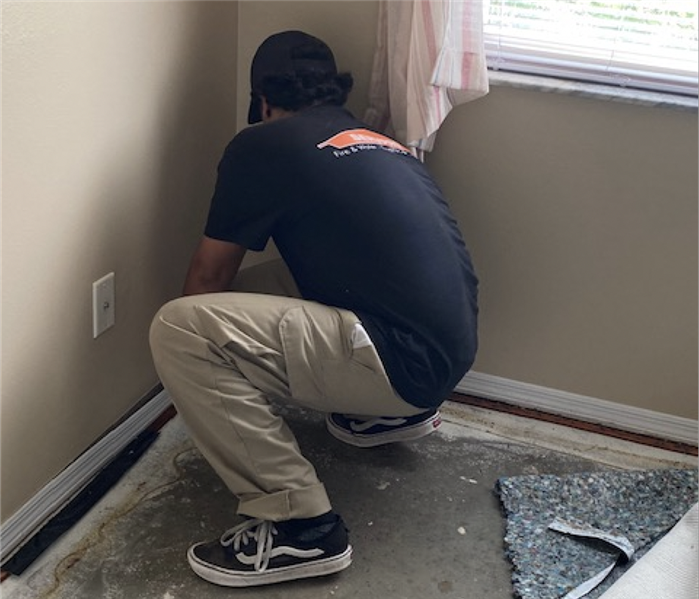Mold vs. Mildew: Unveiling Their Distinct Traits
2/6/2024 (Permalink)
 In this blog, we'll unravel the mystery behind mold vs. mildew, shedding light on their distinct characteristics and the best ways to deal with them.
In this blog, we'll unravel the mystery behind mold vs. mildew, shedding light on their distinct characteristics and the best ways to deal with them.
Mold and mildew have a knack for showing up unexpectedly in your home and making themselves at home on various surfaces. Although they might seem similar at first glance, understanding the differences between mold and mildew is crucial for effective removal and prevention. In this blog, we'll unravel the mystery behind mold vs. mildew, shedding light on their distinct characteristics and the best ways to deal with them.
Appearance
Mold comes in various colors, including green, blue, or black, and its appearance can be fuzzy or slimy, depending on the type. It tends to have a more textured appearance, resembling spots or patches that can be raised or have a fuzzy texture.
On the other hand, mildew is typically white or gray, with a powdery appearance. It can also manifest in shades of yellow or brown, depending on the surface it infests. Mildew usually has a flat or powdery texture, giving affected surfaces a more downplayed and less invasive look.
Surface Growth
Mold tends to penetrate surfaces, growing not only on the surface but also beneath it. This makes it more challenging to eradicate. Mold thrives in damp and humid environments, making it more likely to appear on materials like wood, drywall, or fabrics.
In contrast, mildew typically stays on the surface without penetrating deeper layers. This makes it relatively easier to clean and remove. Mildew favors flat, non-porous surfaces like bathroom tiles, shower curtains, or painted walls.
Environmental Preferences
Mold thrives in environments with higher moisture levels, often caused by persistent water issues, leaks, or high humidity. It is versatile and can adapt to a wide range of temperatures, making it resilient in various indoor and outdoor settings.
Mildew prefers high humidity but can also thrive in lower humidity conditions. It often appears in areas with limited ventilation or inadequate airflow. Mildew is more surface-specific and tends to grow on materials like shower tiles, fabrics, or paper.
Removal Methods
Mold removal often requires thorough cleaning, including the removal of affected materials in severe cases. Professional intervention may be necessary for extensive mold growth. Addressing the root cause, such as water leaks or humidity issues, is crucial for preventing mold recurrence.
Mildew can often be cleaned with surface disinfectants or household cleaning agents. Regular cleaning and maintenance can help prevent mildew growth.
Understanding the differences between mold and mildew empowers homeowners to address these uninvited guests with the right approach. Whether it's the textured appearance of mold or the powdery nature of mildew, recognizing these nuances is key to effective removal and prevention strategies. Regular cleaning, proper ventilation, and addressing moisture issues are crucial for keeping both mold and mildew at bay in your living space.

 24/7 Emergency Service
24/7 Emergency Service